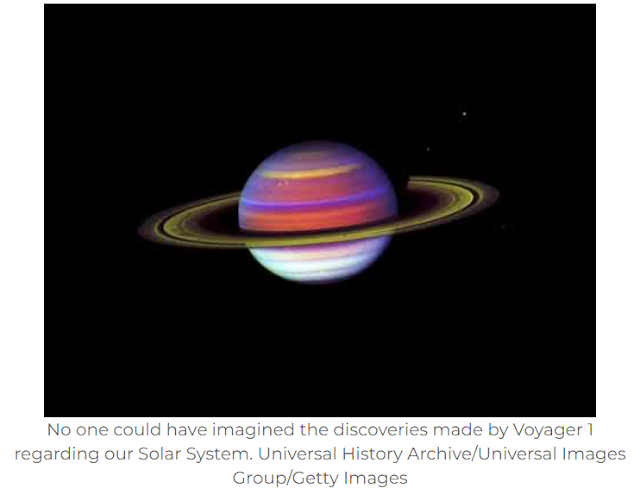The VOYAGER 1 spacecraft of NASA is travelling in the unexplored and hazardous depths of space. It and its sister probe, Voyager 2, have flown outside the Solar System and into the interstellar medium, making them the most farthest man-made objects from Earth. At that range, anything might go wrong. Additionally, keep in mind that this is an old craft: In the 1970s, The Voyagers first debuted. In May of this year, instead of telemetry data, Voyager 1 started returning odd, jumbled nonsense, and NASA engineers could have been excused for calling it a day and pouring one out for arguably the greatest successful space mission in history.
However, it is not how NASA functions. Instead, they got to work on the world-record-breaking spacecraft's remote diagnosis and repair. Four months later, they had triumphed. After being taken out of service, Voyager 1 is now back in operation and communicating with ground control as usual. As straightforward as anything can be with a 22-hour communications lag in each direction and billions of kilometres between, the answer was actually extremely simple.
WHAT WILL HAPPEN TO VOYAGER 1?
With tonnes of data being sent back to Earth, the 45-year-old spacecraft appeared to be operating beautifully in interstellar space. The attitude articulation and control system, or AACS, onboard Voyager 1 is in charge of keeping the spacecraft's high-gain antenna pointing at Earth. However, starting in mid-May, it started transmitting confusing data instead of the spacecraft's usual health and status updates. From our vantage point, the spaceship appeared to have experienced an electronic type of aphasia, a condition that results in the loss of fluent speech.
According to a NASA statement from the time, "The data may seem to be arbitrarily generated or do not reflect any probable state the AACS could be in."
The fact that Voyager 1 looked to be in good shape despite the spacecraft's odd status updates was even more puzzling for engineers. The spacecraft's radio signal remained strong and reliable, showing that the antenna was still pointed towards Earth and not as the AACS had reported in its reporting to NASA. Similar to how the AACS was unaffected, Voyager 1's science systems carried on collecting and transmitting data as usual. A fault prevention mechanism that is meant to put the spaceship in safe mode when there is a problem was not activated by whatever was wrong with the AACS, as well. Thankfully, NASA engineers found the problem. They might also utilise the diagnosis to track down a treatment.
THE FIX - It was found that the AACS was using an onboard computer that had stopped functioning years before to provide telemetry data. The dead computer was to blame for the damaged data. All NASA engineers had to do was tell the AACS to relay its data home using the proper computer.
However, there is a problem — Finding out what motivated the AACS to switch systems in the first place will be the next step. The system likely received a bad order from another onboard computer, according to NASA. While they assert that there is now no grave concern for Voyager 1's wellbeing, the root cause must be identified and fixed to stop more strangeness.
FIRST LIVESON VOYAGER
More over 23.4 billion kilometres, or 14.6 billion miles, separate Voyager 1 from Earth at this moment (and gaining most of the time). You may track the expansion of the separation and see the current trajectories of both Voyager spacecraft on the NASA website.
Beyond the magnetic field of our Sun, Voyager 1 has been drifting in interstellar space for the past ten years. Similar to how Earth's magnetic field protects us from high-energy particles and radiation from the Sun, the field protected the probe from cosmic rays and other interstellar radiation. It's reasonable to suppose that the onboard computers of Voyager 1 will also be concerned about memory errors that can occur when one of those high-speed energetic particles impacts a computer chip and gradually accumulate.
In a statement from May, Suzanne Dodd, the project manager for Voyager 1 and 2, said, "A puzzle like this is sort of par for the course at this level of the Voyager mission." "The spacecraft are about 45 years old on average, which is much older than the mission planners had planned. Additionally, we are in interstellar space, which is a highly radioactive environment that has never been explored by a spacecraft.
We'll have to wait and see what brand-new perils and discoveries Voyager will encounter on its upcoming voyage.
Reference: NASA







0 Comments